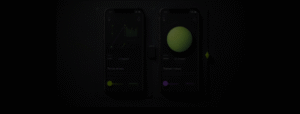

Mastering UX Research: A Comprehensive Guide for 2024
- 1. A brief overview
- 2. Understanding User Experience
- 3. The Role of UX Research
- 4. Types of UX Research
- 5. Setting Goals for UX Research
- 6. Planning the Research Process
- 7. Conducting User Interviews
- 8. Running Surveys and Questionnaires
- 9. Observational Research Techniques
- 10. Usability Testing
- 11. Synthesizing Research Findings
- 12. Applying Research Insights to Design
- 13. Challenges and Best Practices
- 14. Measuring the Impact of UX Research
User Experience (UX) research is the backbone of successful digital product design. In 2024, as the digital landscape evolves rapidly, understanding and implementing effective UX research methodologies are more crucial than ever. In this guide, we’ll delve into the intricacies of conducting comprehensive UX research to create user-centric products that resonate with your audience.
1. A brief overview
1.1 Definition of UX Research
UX research involves studying user behaviors, needs, and motivations to design products that provide meaningful experiences. It encompasses various methodologies to gather insights into user interactions with digital interfaces.
1.2 Importance of UX Research in 2024
In an era marked by fierce competition and heightened user expectations, businesses cannot afford to overlook the significance of UX research. It serves as a compass, guiding product development teams toward creating solutions that align with user preferences and expectations.
2. Understanding User Experience
2.1 What is User Experience (UX)?
User Experience refers to the overall experience a person has while interacting with a product or service. It encompasses aspects such as usability, accessibility, and emotional satisfaction.
2.2 Elements of UX Design
Effective UX design integrates usability, visual aesthetics, accessibility, and emotional appeal to create seamless interactions between users and products.
3. The Role of UX Research
3.1 Importance of Research in UX Design
Research forms the foundation of UX design by providing insights into user behaviors, preferences, pain points, and goals. It enables designers to make informed decisions throughout the design process.
3.2 How UX Research Influences Product Success
By understanding user needs and preferences, UX research enables organizations to develop products that meet market demands, drive user satisfaction, and ultimately, achieve business goals.
4. Types of UX Research
4.1 Quantitative Research
Quantitative research involves collecting numerical data to quantify user behaviors and preferences. This includes methods such as surveys, analytics, and A/B testing.
4.2 Qualitative Research
Qualitative research focuses on understanding user motivations, attitudes, and emotions through open-ended techniques like interviews, focus groups, and ethnographic studies.
4.3 Usability Testing
Usability testing involves observing users as they interact with prototypes or existing products to identify usability issues and gather feedback for improvement.
5. Setting Goals for UX Research
5.1 Defining Objectives
Clearly defined research objectives help teams align their efforts with the overarching goals of the project. Objectives should be specific, measurable, achievable, relevant, and time-bound (SMART).
5.2 Identifying Key Metrics
Selecting relevant metrics allows teams to measure the success of UX research initiatives. Metrics may include task completion rates, time on task, satisfaction scores, and conversion rates.
6. Planning the Research Process
6.1 Creating a Research Plan
A research plan outlines the scope, objectives, methodologies, timeline, and resources required for conducting UX research. It serves as a roadmap to ensure research activities are organized and effective.
6.2 Choosing Research Methods
Selecting appropriate research methods depends on factors such as the research objectives, target audience, budget, and timeline. Common methods include interviews, surveys, observational studies, and usability testing.
7. Conducting User Interviews
- Preparation: Before conducting interviews, researchers should define interview goals, recruit suitable participants, and prepare interview guides with open-ended questions.
- Asking the Right Questions: Effective interview questions elicit detailed responses from participants, uncovering insights into their behaviors, preferences, and pain points.
- Analyzing Interview Data: Data analysis involves synthesizing interview transcripts, identifying recurring themes, and extracting meaningful insights to inform design decisions.
8. Running Surveys and Questionnaires
- Designing Effective Surveys: Well-designed surveys feature clear, concise questions, logical flow, and appropriate response options to ensure accurate data collection.
- Analyzing Survey Responses: Analyzing survey data involves aggregating responses, identifying trends, and deriving actionable insights to guide product improvements.
9. Observational Research Techniques
9.1 Contextual Inquiry
Contextual inquiry involves observing users in their natural environment to understand how they interact with products or perform tasks in real-world settings.
9.2 Diary Studies
Diary studies require participants to document their experiences over a period, providing rich insights into their daily routines, habits, and challenges.
9.3 Card Sorting
Card sorting helps organize information architecture by allowing participants to categorize and prioritize content based on their mental models.
10. Usability Testing
10.1 Planning and Preparation
Usability testing requires careful planning, including defining test objectives, recruiting participants, creating test scenarios, and selecting appropriate usability metrics.
10.2 Conducting Usability Tests
During usability tests, researchers observe participants as they complete tasks, navigate interfaces, and provide feedback on usability issues.
10.3 Analyzing Usability Test Results
Analysis of usability test results involves identifying usability issues, prioritizing them based on severity, and generating recommendations for design improvements.
11. Synthesizing Research Findings
11.1 Organizing and Summarizing Data
Researchers organize research findings into meaningful formats such as personas, journey maps, or affinity diagrams to facilitate understanding and decision-making.
11.2 Identifying Patterns and Insights
Identifying patterns and insights enables teams to uncover underlying user needs, pain points, and opportunities for innovation.
12. Applying Research Insights to Design
12.1 Translating Insights into Design Decisions
UX research findings serve as inputs for design decisions, guiding the creation of user interfaces that address user needs and preferences effectively.
12.2 Iterative Design Process
Iterative design involves continuously refining and improving designs based on user feedback and usability testing results, ensuring that the final product evolves iteratively to meet user expectations
13. Challenges and Best Practices
13.1 Common Challenges in UX Research
Challenges in UX research include recruiting representative participants, balancing qualitative and quantitative insights, interpreting subjective data, and navigating tight budgets and timelines.
13.2 Best Practices for Overcoming Challenges
To overcome these challenges, it’s essential to invest in robust participant recruitment strategies, triangulate data from multiple sources, collaborate closely with cross-functional teams, and prioritize research activities based on their impact on product outcomes.
14. Measuring the Impact of UX Research
14.1 Key Performance Indicators (KPIs)
Measuring the impact of UX research involves tracking key performance indicators such as user satisfaction scores, task completion rates, conversion metrics, and product adoption metrics.
14.2 Continuous Improvement
UX research is an ongoing process that requires continuous iteration and improvement. By soliciting feedback from users, monitoring performance metrics, and staying abreast of industry trends, organizations can refine their research methodologies and enhance the user experience over time.
In conclusion, conducting effective UX research in 2024 is imperative for organizations seeking to create user-centric products that resonate with their target audience. By understanding user behaviors, needs, and preferences through a combination of qualitative and quantitative research methods, businesses can design solutions that not only meet user expectations but also drive business success. With careful planning, execution, and analysis, UX research empowers teams to make informed design decisions, iterate iteratively, and deliver experiences that delight users.
- 1. A brief overview
- 2. Understanding User Experience
- 3. The Role of UX Research
- 4. Types of UX Research
- 5. Setting Goals for UX Research
- 6. Planning the Research Process
- 7. Conducting User Interviews
- 8. Running Surveys and Questionnaires
- 9. Observational Research Techniques
- 10. Usability Testing
- 11. Synthesizing Research Findings
- 12. Applying Research Insights to Design
- 13. Challenges and Best Practices
- 14. Measuring the Impact of UX Research










